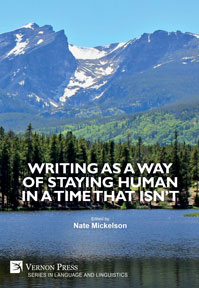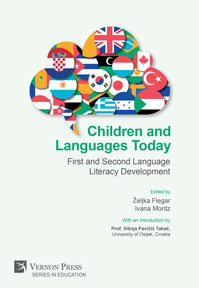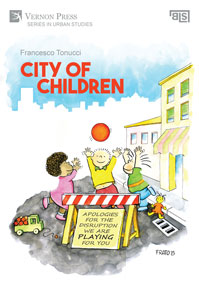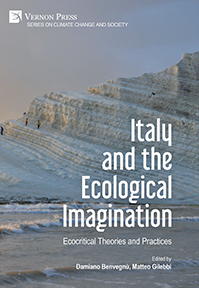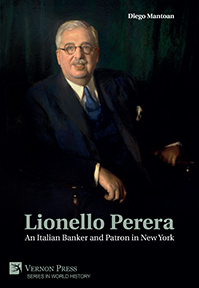Italy in the Second Half of the 19th Century: Bridging New Cultures
Francesca Cadel, Paola Nastri (Eds.)
by Rossana Dedola (Independent Scholar), Ernesto Livorni (University of Wisconsin-Madison), Sabrina Fava (Università Cattolica del Sacro Cuore, Milano, Italy), Letterio Todaro (Università di Catania, Italy), Loredana Palma (Università di Napoli “L’Orientale,” Italy), Maria Cristina Alberti (Independent Scholar), Eleonora Buonocore (University of Calgary ), Antonella Valoroso (The Umbra Institute and Sorbello Foundation, Perugia, Italy), Lisa Ferrante Perrone (Bucknell University), Susan Amatangelo (College of the Holy Cross), Cristina Carnemolla (McGill University)
Purchase this book
(click here to change currency)
A period of turmoil, uncertainty, and fears, the second half of the nineteenth century in Italy is also characterized by resilience, creativity, courageous discussions on the emancipation of women, and a variety of cultural products that are instrumental for the birth of a new and modern culture that will lead to the achievements of the twentieth century. Contributing to and expanding on recent scholarships on Italian literature of the nineteenth century, the book presents a series of literary, interdisciplinary and intercultural case studies. These case studies explore the social and cultural dimensions of the period, investigating the historical, literary, artistic, cultural, and social events of the time while probing their significance and relevance in bridging new Italian cultures.
List of Figures
Acknowledgements
Editors
Preface
Cosetta Seno
University of Colorado, Boulder
Introduction
Paola Nastri
Independent Scholar
Part One: Books and Magazines for the Education of School Children and the Birth of New Publishing Companies
Chapter 1
Edmondo De Amicis’ Cuore: Education After Risorgimento
Ernesto Livorni
University of Wisconsin-Madison
Chapter 2
Geppetto e Collodi all’inseguimento di Pinocchio
Rossana Dedola
Independent Scholar
Chapter 3
La rivista Le Prime Letture (1870-1878): la formazione di giovani lettori “virtuosi e cólti del pari”
Sabrina Fava
Università Cattolica del Sacro Cuore, Milano, Italy
Chapter 4
A Mirror of Modernization: The Stunning Rise of Children’s Books Publishing and the Unique Case of the Biondo Brothers’ Publishing Company in ‘felicissima’ Palermo
Letterio Todaro
Università di Catania, Italy
Part Two: Emancipation of Women and Innovative Modernity in Female Characters
Chapter 5
Un contributo al dibattito sulla questione femminile tra Otto e Novecento: Aurelia Folliero De Luna Cimino e Fanny Salazar Zampini
Loredana Palma
Università di Napoli “L’Orientale,” Italy
Chapter 6
L’evoluzione della figura femminile fra tradizione e innovazione in Le confessioni di un italiano di Ippolito Nievo e Un anno di scuola di Giani Stuparich
Maria Cristina Alberti
Independent Scholar
Chapter 7
Carolina Invernizio’s Nina, la poliziotta dilettante: Bridging Mystery and Serial Romantic Novels
Eleonora Buonocore
University of Calgary
Part Three: Theater, an Archivist and Historian
Chapter 8
Uno sguardo dal palcoscenico: il teatro ‘mondiale’ di Adelaide Ristori
Antonella Valoroso
The Umbra Institute and Sorbello Foundation, Perugia, Italy
Chapter 9
‘Per divinare l’Italia futura’: Gino Capponi as Archivist and Collector
Lisa Ferrante Perrone
Bucknell University
Part Four: Giovanni Verga and the South of Italy
Chapter 10
Viewing the South: The Role of Verismo and the Illustrative Arts in Shaping Post-Unification Italian Culture
Susan Amatangelo
College of the Holy Cross
Chapter 11
The South as an Idyllic Nightmare: Giovanni Verga’s “Fantasticheria” (1879)
Cristina Carnemolla
McGill University
Afterword
Authors
Francesca Cadel teaches Italian and Film Studies at the University of Calgary, in Canada, after many years teaching in the U.S. (Yale and Columbia). She earned a PhD in Comparative Literature at the CUNY Graduate Center and a Doctorate in Italian from the University of Sorbonne-Paris IV. She has published several works including: ‘La langue de la poésie. Langue et dialecte chez Pier Paolo Pasolini (1922-1975) et Andrea Zanzotto’, Villeneuve-d’Ascq: Presses Universitaires du Septentrion, 2001, ‘La lingua dei desideri. Il dialetto secondo Pier Paolo Pasolini’, Lecce: Manni, 2002, (with Davide Rondoni) ‘Poeti con nome di donna’, Milano: Rizzoli-BUR, 2008, peer-reviewed articles on Pasolini, Zanzotto, Pound, Morante, interviews (with Andrea Zanzotto, Pina Kalc, Nico Naldini, Antonio Negri among others) and translations: Franco Berardi Bifo, ‘The Soul at Work’, MIT, 2009 (from Italian into English), Clemente Martini, ‘Il commediante’, Milan, Mimesis, 2020 (from English into Italian). In collaboration with Paola Nastri, she edited Carlo Collodi’s masterpiece ‘Pinocchio. Storia di un burattino’, New York, Farinelli, 2013. Her current book project is entitled ‘Dai Quaranta ai Settanta. Un percorso di “Scorciatoie”: da Umberto Saba al “Moro” di Pietro Di Donato’, Milano: Mimesis, forthcoming.
Paola Nastri is an Independent Research Scholar at Yale University and at the Center for Research in the Humanities at the New York Public Library. She holds a PhD in Italian Language and Literature from Yale University, where she is a mentor on Cross Campus and an Alumni Schools Committee interviewer for prospective students. Her academic interests encompass seventeenth-to nineteenth-century Italian literature and culture, interdisciplinarity, interrelations of literatures, figurative arts, visual culture and the nexus of language and literature. She is the author of essays on literature and language pedagogy, edited an Italian textbook: ‘Pinocchio. Storia di un burattino’, Farinelli, 2013 (with Francesca Cadel), and ‘How to Use Literature in the Italian Language Class’, NeMLA Italian Studies, 2019 (with Paola Quadrini), and published ‘Spazi Riflessivi in Passeggeri Notturni’, Routledge, 2020 (with Daniela Antonucci). She is currently working on a study of passions in literature and the visual arts.
Risorgimento, Education, Questione della Lingua, Women’s Rights, Pinocchio, Cuore, Citizenship, Theatre, Opera, Literature of the 19th century, Plays, Children’s Textbooks
See also
Bibliographic Information
Book Title
Italy in the Second Half of the 19th Century: Bridging New Cultures
ISBN
978-1-64889-927-0
Edition
1st
Number of pages
266
Physical size
236mm x 160mm

![Italy in the Second Half of the 19th Century: Bridging New Cultures [Paperback]](/file/23265/129881197a2a1b862ef2d675564ca1c5/1709223842.jpg)

